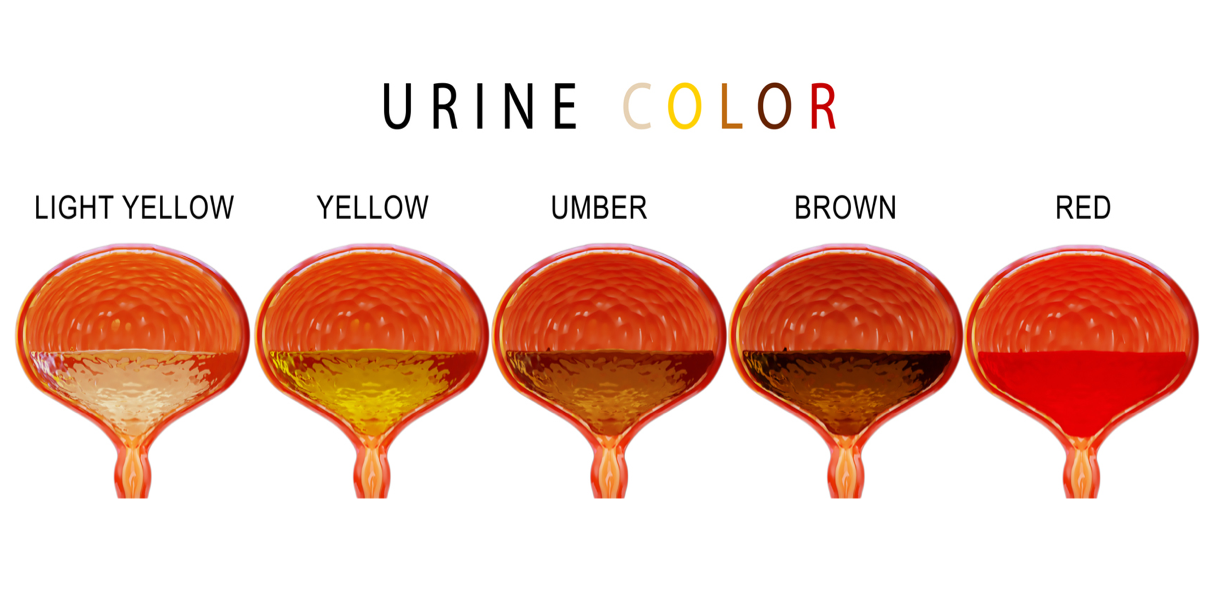We were recently contacted by an IC/BPS patient whose urine contained bright, red blood. She had been bleeding several days a week for months yet an examination of her bladder found perfectly normal tissue. Obviously, the blood had to have been coming from somewhere, most likely her kidneys, but this brings up an important question. Is blood in your urine (aka hematuria) normal?
Types of Hematuria
If your urine in your toilet bowl is pink, red, brown or tea colored, you have “gross hematuria,” aka blood that is visible to the naked eye. If a doctor tells you that you have “microhematuria,” this means that he saw blood cells under a microscope. Both require a proper workup.
Gross hematuria is an urgent concern that requires immediate consultation with your medical care providers or a trip to the emergency room if it is severe. Microhematuria is less concerning. Both can be caused by cancer, kidney stones, infection (viral or bacterial), some medications (ketamine) or a prostate disorder. Hematuria can also be an early warning sign of bladder, kidney or prostate cancer, especially if you have known risk factors such as the smoking or the use of tobacco products. Blood in the urine is more common in patients with active Hunner’s lesions, especially after a hydrodistention.
One study found that up to 30% of IC patients had some degree of hematuria. Of 148 patients, 61 (41%) were found to have had one episode of hematuria. The causes were benign: simple renal cysts, renal stones, reflux nephropathy and one with a sponge kidney. Cystoscopy, cytology and biopsy did not find cancer in this group of patients, leaving the authors to conclude that hematuria was not a cause for concern. (1)
Misdiagnosed with IC! Blood in urine revealed cancer
Yet, it is possible to be misdiagnosed with IC. Researchers at Beaumont Hospital found bladder cancer in just 1% of 600 patients initially diagnosed with IC though several of these patients had no hematuria.(2) In 2013, researchers in West Virginia shared the case of a 39 year old woman struggling with bladder and lower abdominal pain, urinary frequency and nocturia diagnosed with IC who was later found to have a rare squamous cell carcinoma. (3)
Why does microhematuria occur during flares?
So why does microhematuria occur in some IC patients who are flaring? If the bladder wall is injured, urine can penetrate more deeply into the tissue activating an immune response. White blood cells are sent to the area to “kill” the invader. Capillaries then open to release them into the tissue, which also releases some red blood cells into your urine. So, whether the bladder wall irritated by a chemical (i.e. coffee, tea, artificial sugar, chemotherapy) or it’s vulnerable because of estrogen atrophy, microhematuria could be the result of simple bladder wall irritation.
Risk factors & Testing
According to the American Urology Association (AUA), if microhematuria is found, treatment and care will be dependent upon your risk factors.(4) Patients with a low risk are younger (women under the age of 50, men under the age of 40), with no history fo smoking with no prior episodes. They may be followed up in six months or have a cystoscopy and renal ultrasound just to be cautious. Patients with intermediate risks are middle aged (women between the ages of 50-59, men between 40-59), have smoked from 10 to 30 years should always have a cystoscopy and renal ultrasound. High risk patients are over the age of 60, with more than 30 years of smoking and a history of gross hematuria. They should have a cystoscopy and CT Urogram. Long-term observation will be essential.
We urge you to report any episodes of gross hematuria with your doctor for a prompt diagnostic workup. Bladder cancer is considered the easiest cancer to treat if you catch it early!
References:
- Gomes C, et al. Significant of hematuria in patients with IC: review of radiographic and endoscopic finds. Adult Urology. 2001 Volume 57(2). Pages 262-265
- Allen P. Bladder cancer diagnosed as IC in 1% of patients. Urology Times. August 15, 2004
- Prudnick C, et al. Squamous Cell Carcinoma of the Bladder Mimicking IC and Voiding Dysfunction. Case report. Volume 2013, Article ID 924918
- Barocas DA, et al: Microhematuria: AUA/SUFU guideline. J Urol 2020; 204: 778.

